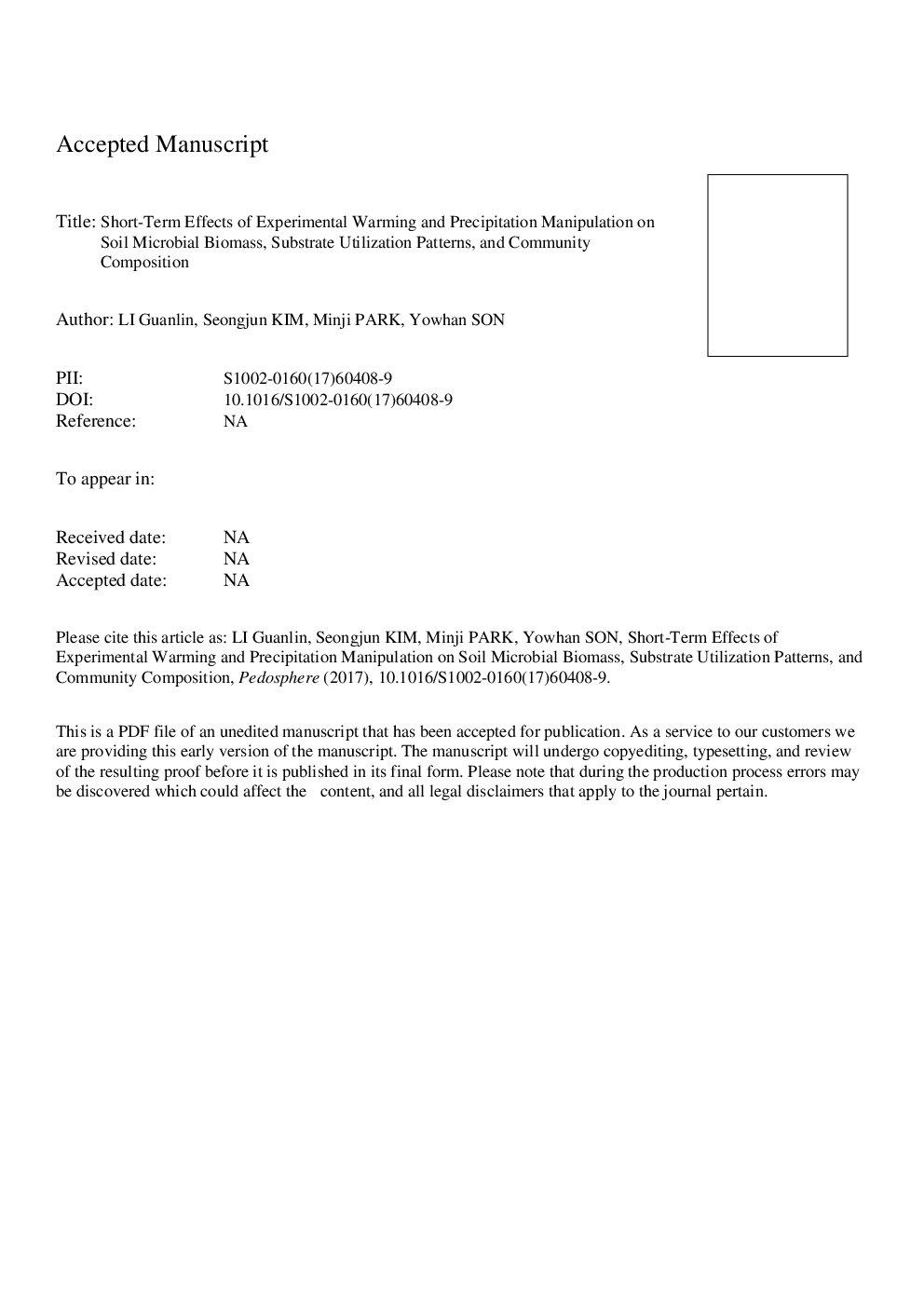| Article ID | Journal | Published Year | Pages | File Type |
|---|---|---|---|---|
| 8895464 | Pedosphere | 2017 | 16 Pages |
Abstract
Soil microorganisms are major drivers of soil carbon (C) cycling; however, the response of these microorganisms to climate change remains unclear. In the present study, we investigated how 18 months of multifactor climate treatments (warmed air temperature by 3 °C and decreased or increased precipitation manipulation by 30%) affected soil microbial biomass C and nitrogen (N), community substrate utilization patterns, and community composition. Decreased and increased precipitation significantly reduced microbial biomass C by 13.5% and 24.9% and microbial biomass N by 22.9% and 17.6% in unwarmed plots, respectively (P < 0.01). Warming enhanced community substrate utilization by 89.8%, 20.4%, and 141.4% in the natural, decreased, and increased precipitation plots, respectively. Particularly, warming significantly enhanced the utilization of amine and carboxylic acid substrates among all precipitation manipulation plots. Compared with the natural air temperature with natural precipitation treatment, other treatments affected fungal community richness by â0.9% to 33.6% and reduced the relative abundance of the dominant bacterial and fungal groups by 0.5% to 6.8% and 4.3% to 10.7%, respectively. The warming and/or precipitation manipulation treatments significantly altered Zygomycota abundance (P < 0.05). Our results indicate that climate change drivers and their interactions may cause changes in soil microbial biomass C and N, community substrate utilization patterns, and community composition, particularly for the fungal community, and shifts in the microorganism community may further shape the ecosystems function.
Related Topics
Life Sciences
Agricultural and Biological Sciences
Soil Science
Authors
Guanlin LI, Seongjun KIM, Minji PARK, Yowhan SON,
